Abstract
Motor evoked potentials and central motor conduction time (CMCT) were examined from both upper and lower limbs in patients with normal pressure hydrocephalus to find a predictor for the success of shunting procedures. The hypotheses that walking disturbances are due to pyramidal tract compression as well as the possibility that the upper limbs are affected subclinically in these patients were also studied. The study suggests that the walking disturbances are not the result of a major pyramidal tract dysfunction but probably involve the sensorimotor integration leading to normal gait. Furthermore, CMCT measured with electromagnetic motor stimulation can help in selecting the patients that will benefit from shunting. The study does not provide electrophysiological evidence of upper limb involvement in normal pressure hydrocephalus.
Full text
PDF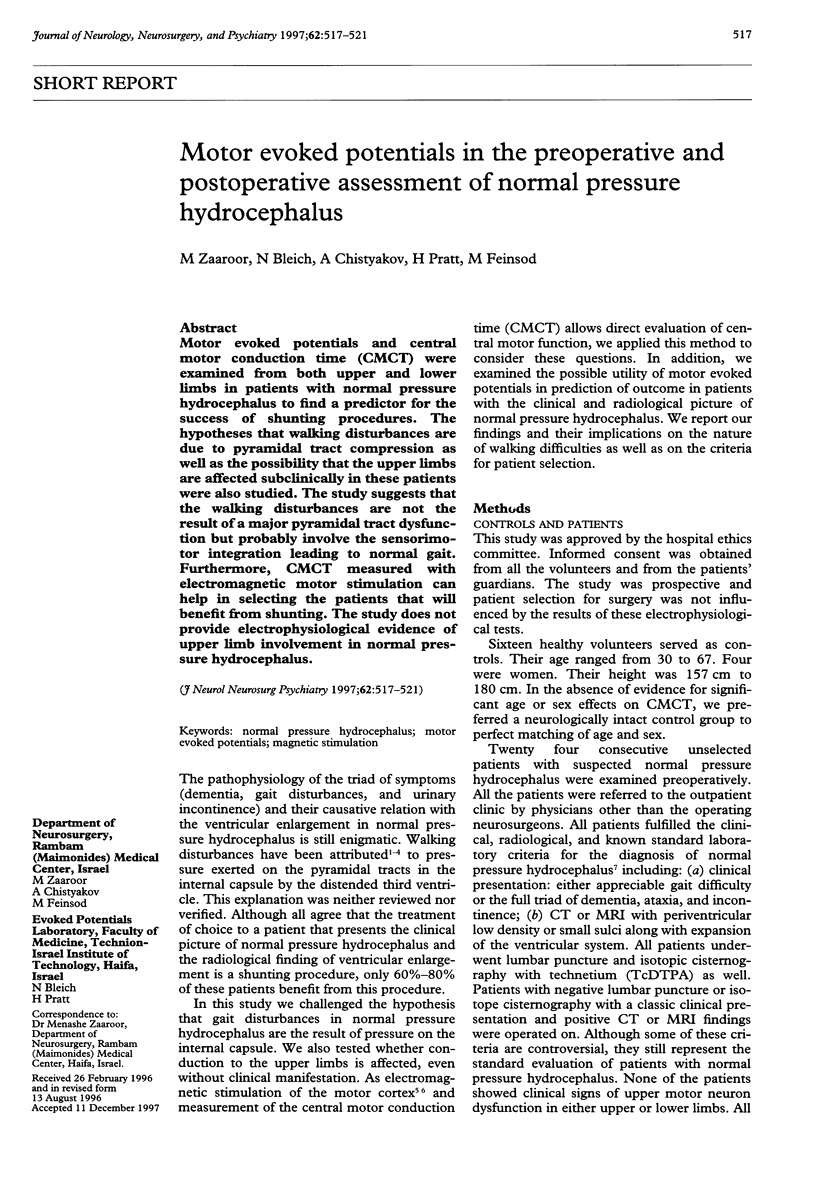
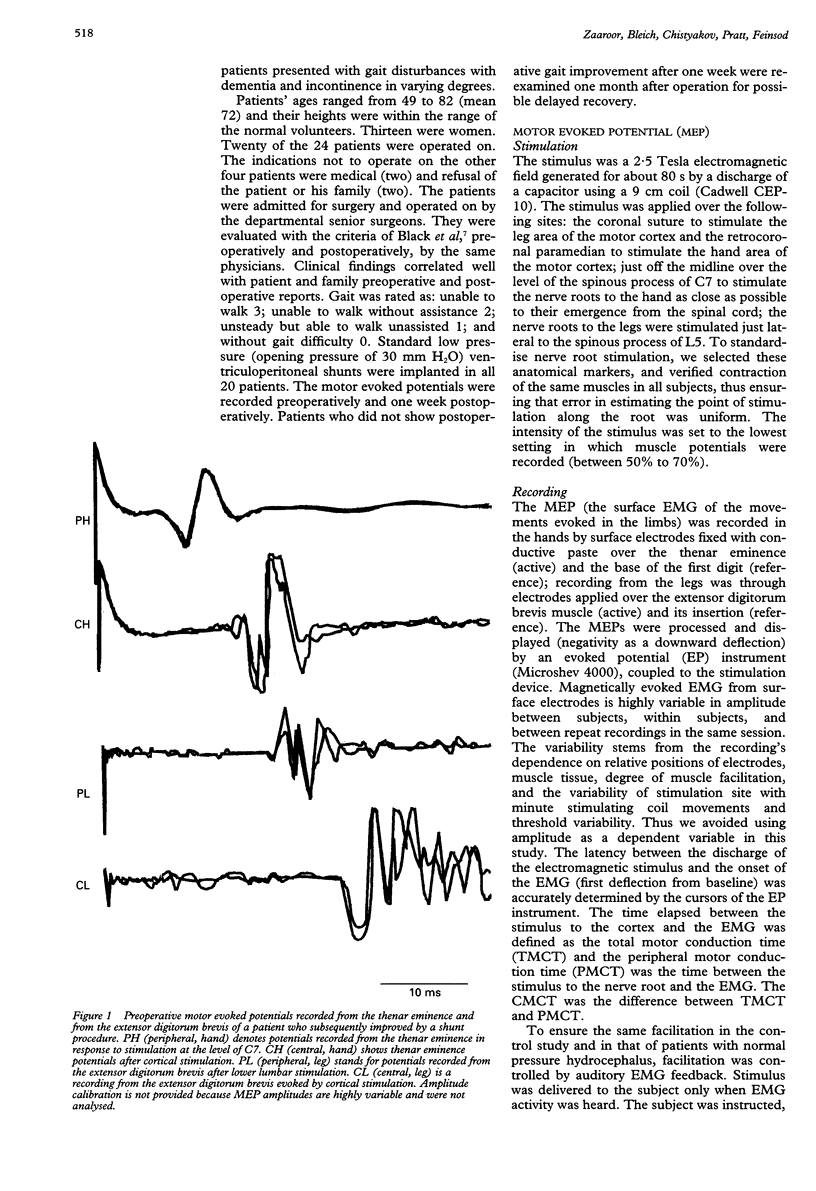
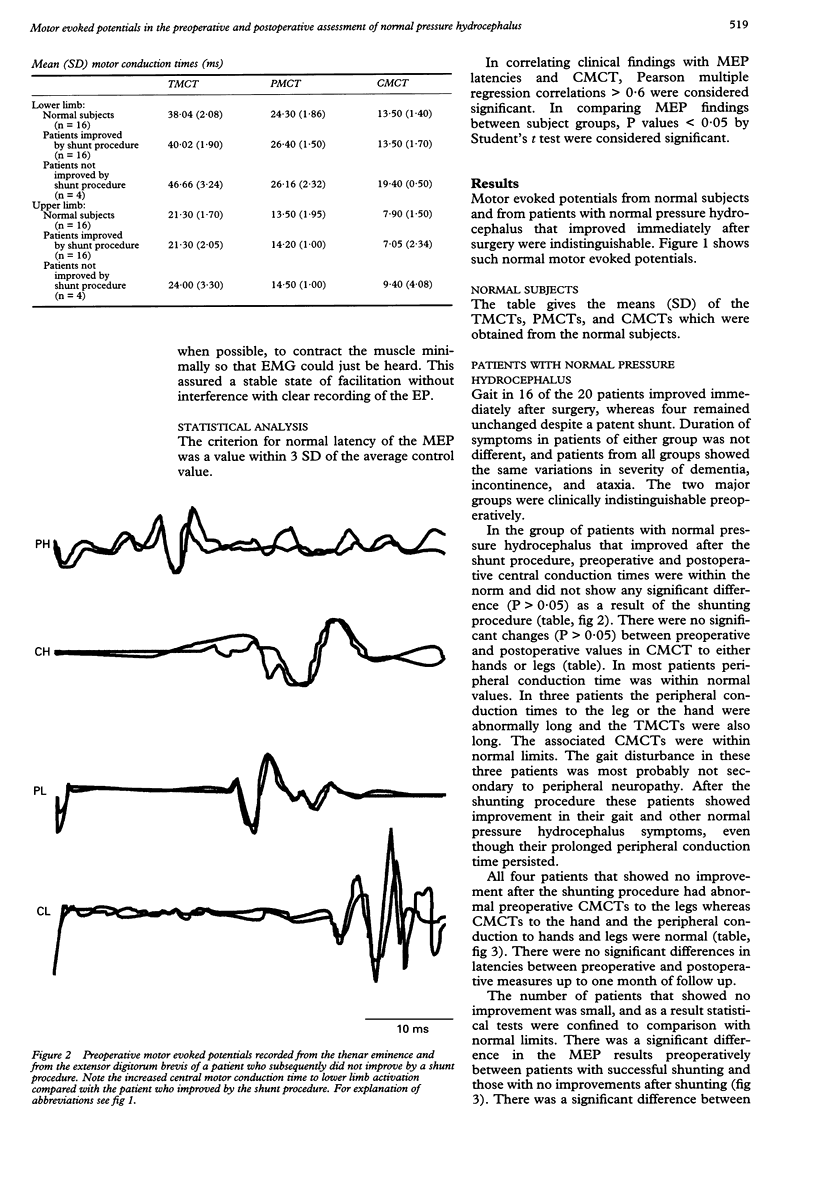
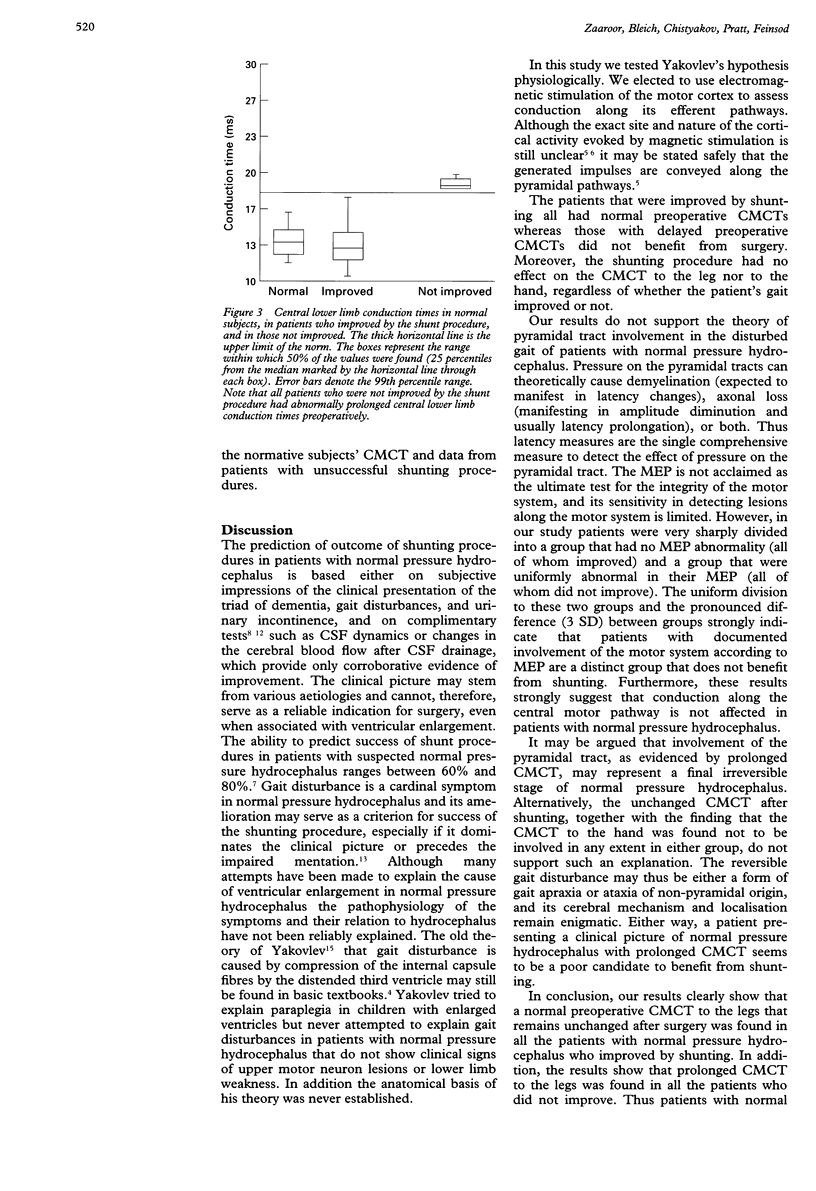
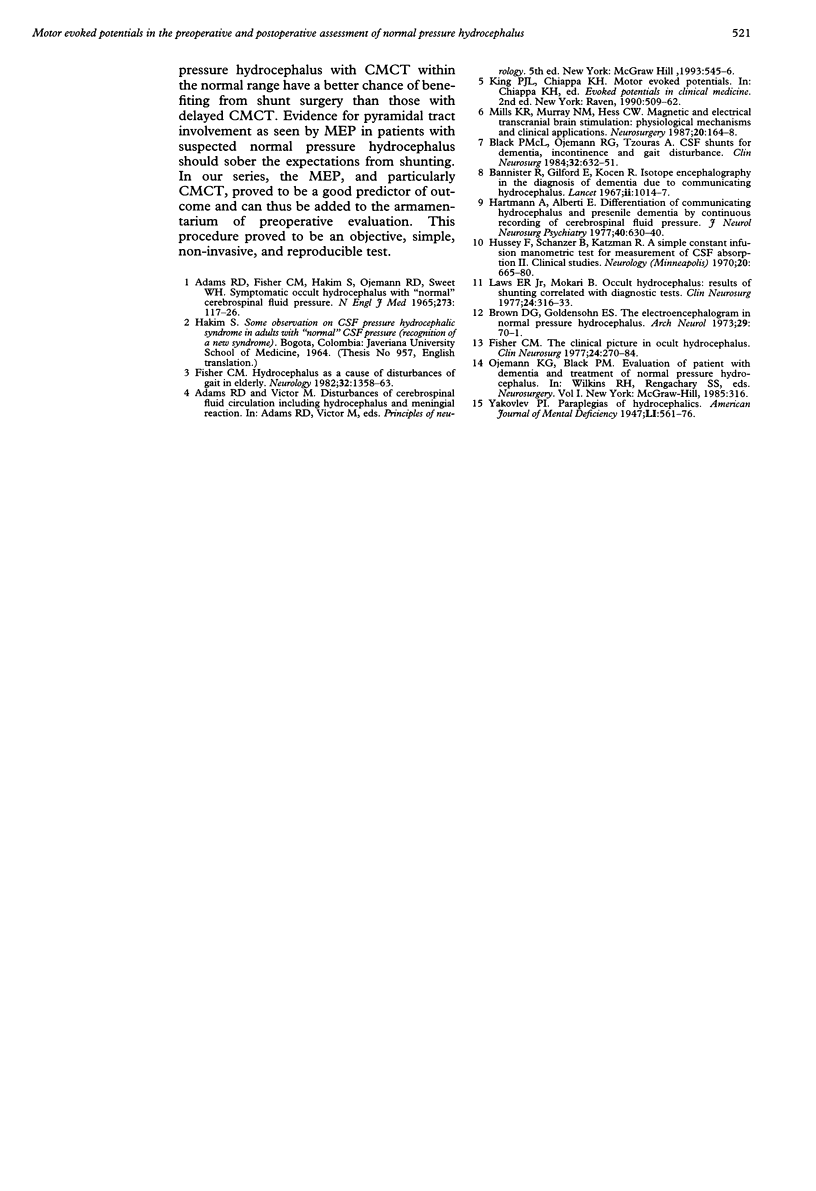
Selected References
These references are in PubMed. This may not be the complete list of references from this article.
- ADAMS R. D., FISHER C. M., HAKIM S., OJEMANN R. G., SWEET W. H. SYMPTOMATIC OCCULT HYDROCEPHALUS WITH "NORMAL" CEREBROSPINAL-FLUID PRESSURE.A TREATABLE SYNDROME. N Engl J Med. 1965 Jul 15;273:117–126. doi: 10.1056/NEJM196507152730301. [DOI] [PubMed] [Google Scholar]
- Bannister R., Gilford E., Kocen R. Isotope encephalography in the diagnosis of dementia due to communicating hydrocephalus. Lancet. 1967 Nov 11;2(7524):1014–1017. doi: 10.1016/s0140-6736(67)90288-7. [DOI] [PubMed] [Google Scholar]
- Black P. M., Ojemann R. G., Tzouras A. CSF shunts for dementia, incontinence, and gait disturbance. Clin Neurosurg. 1985;32:632–651. [PubMed] [Google Scholar]
- Brown D. G., Goldensohn E. S. The electroencephalogram in normal pressure hydrocephalus. Arch Neurol. 1973 Jul;29(1):70–71. doi: 10.1001/archneur.1973.00490250088014. [DOI] [PubMed] [Google Scholar]
- Fisher C. M. Hydrocephalus as a cause of disturbances of gait in the elderly. Neurology. 1982 Dec;32(12):1358–1363. doi: 10.1212/wnl.32.12.1358. [DOI] [PubMed] [Google Scholar]
- Fisher C. M. The clinical picture in occult hydrocephalus. Clin Neurosurg. 1977;24:270–284. doi: 10.1093/neurosurgery/24.cn_suppl_1.270. [DOI] [PubMed] [Google Scholar]
- Hartmann A., Alberti E. Differentiation of communicating hydrocephalus and presenile dementia by continuous recording of cerebrospinal fluid pressure. J Neurol Neurosurg Psychiatry. 1977 Jul;40(7):630–640. doi: 10.1136/jnnp.40.7.630. [DOI] [PMC free article] [PubMed] [Google Scholar]
- Hussey F., Schanzer B., Katzman R. A simple constant-infusion manometric test for measurement of CSF absorption. II. Clinical studies. Neurology. 1970 Jul;20(7):665–680. doi: 10.1212/wnl.20.7.665. [DOI] [PubMed] [Google Scholar]
- Laws E. R., Mokri B. Occult hydrocephalus: results of shunting correlated with diagnostic tests. Clin Neurosurg. 1977;24:316–333. doi: 10.1093/neurosurgery/24.cn_suppl_1.316. [DOI] [PubMed] [Google Scholar]
- Mills K. R., Murray N. M., Hess C. W. Magnetic and electrical transcranial brain stimulation: physiological mechanisms and clinical applications. Neurosurgery. 1987 Jan;20(1):164–168. doi: 10.1097/00006123-198701000-00033. [DOI] [PubMed] [Google Scholar]


